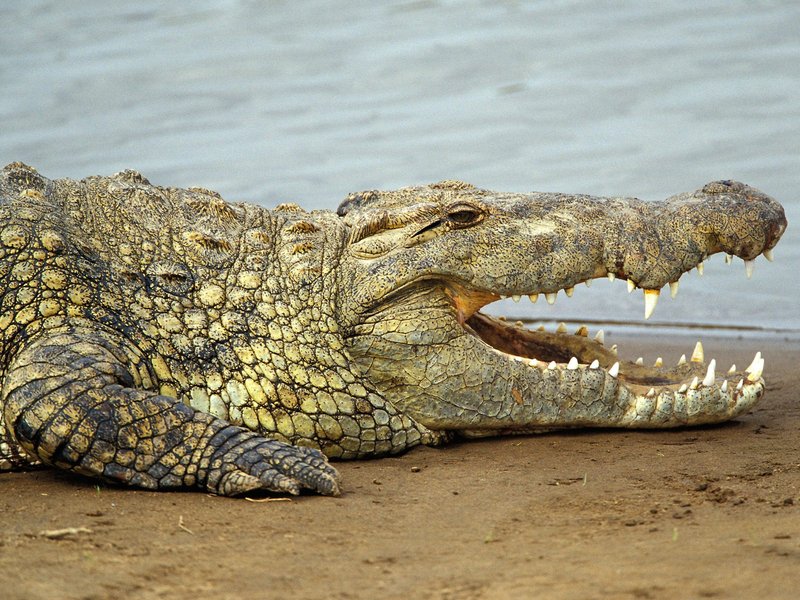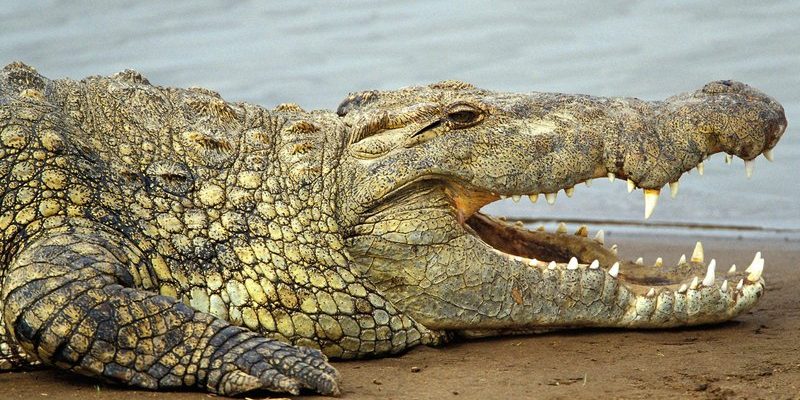
From their unique hunting techniques to their social behaviors, the Nile crocodile is a captivating subject to dive into. Whether you’re a nature lover or just curious about the animal kingdom, there’s a lot to unwrap here. Let’s explore ten surprising facts about the Nile crocodile that might just change the way you view this ancient predator.
1. They’re the Largest Crocodiles in Africa
You might already know that the Nile crocodile is big, but did you know they can grow up to 16 feet long? That’s roughly the length of a small car! These reptiles typically weigh between 500 and 1,600 pounds, depending on their age and diet. When you see one in the wild, it’s hard not to feel a rush of respect for this apex predator.
Their size isn’t just for show. Being large helps them dominate their habitats and hunt effectively. Nile crocodiles have a powerful bite that can exert over 2,000 pounds of pressure, making them one of the strongest biters in the animal kingdom. Imagine trying to fend off something with that kind of strength!
2. They Have Remarkable Hunting Skills
Here’s the thing: Nile crocodiles are not just brutish predators; they are incredibly skilled hunters. They often employ a stealthy technique called “still hunting,” where they wait motionless for hours, camouflaged in the water. When unsuspecting animals come close, they launch themselves with astounding speed, catching their prey off guard.
You might be wondering what they typically eat. Their diet mainly consists of fish, but they don’t shy away from larger animals like zebras or antelope that come near the water’s edge. Honestly, this adaptability in diet ensures their survival even in changing environments.
3. Their Social Structure is Complex
You might think of crocodiles as solitary creatures, but Nile crocodiles actually have a dynamic social structure. They can often be seen basking together in the sun, showing a level of social behavior that’s surprising for reptiles. They communicate with each other using a variety of vocalizations, body postures, and even specific movements.
During the breeding season, these crocodiles come together, forming mating pairs and even caring for their young. Female Nile crocodiles are known to protect their nests fiercely, showing a softer side to their tough exterior. Isn’t it intriguing how even the fiercest predators can display nurturing behavior?
4. They’re Masters of Adaptation
One of the reasons the Nile crocodile has thrived for so long is thanks to its incredible adaptability. They have a unique ability to live in a variety of environments, from rivers and lakes to brackish coastal areas. This versatility means they can survive even in tough conditions, something that many other species struggle with.
Their ability to regulate body temperature is another fascinating adaptation. Crocodiles are ectothermic, meaning they rely on external heat sources to regulate their body temperature. This is why you’ll often see them basking in the sun or soaking in the water. Adapting to their environment is key to their survival and longevity.
5. They Can Live for Decades
Nile crocodiles have long lifespans, often living up to 70 years or more in the wild. This is remarkably impressive when you think about it. Their longevity allows them to continue hunting and breeding over many years, maintaining their presence in their habitats. Some studies even suggest that certain individuals in captivity could live over a century!
This long life also means they can pass down learned behaviors and hunting techniques, something that’s crucial for their continued survival. Imagine having decades of experience in hunting and navigating your environment!
6. They Play a Role in Their Ecosystem
You might not think about the ecological role of a predator like the Nile crocodile, but they’re actually key players in their ecosystems. By controlling the populations of other species, they help maintain a balance in the food chain. This predatory role is essential for ensuring that certain prey species don’t overpopulate, which can lead to habitat degradation.
Moreover, their presence can indicate the health of their aquatic environments. Healthy crocodile populations often mean healthy ecosystems. This connection shows that even fearsome hunters contribute positively to their surroundings.
7. Their Skin is More Than Just Armor
Nile crocodiles are covered in tough, scaly skin that serves as armor against predators and environmental hazards. But there’s more to it than that. Their skin contains special proteins that provide them with a natural form of protection against bacteria and parasites. It’s like nature’s very own armor!
Additionally, their skin plays a critical role in thermoregulation. The scales help them retain or release heat depending on their needs. This feature is vital for their survival, especially in the varying temperatures of their habitats.
8. They Have Unique Parental Care
Crocodile parenting is a fascinating topic. Once female Nile crocodiles lay their eggs—usually around 25 to 80 in a single clutch—they guard the nests fiercely. After about three months, the young hatch, and the mother assists them in getting to the water.
Interestingly, the mother will also make sounds to encourage the hatchlings, guiding them safely to their watery home. This nurturing behavior is quite remarkable, especially considering their reputation as cold-blooded predators.
9. They Can “Drown” Prey
When you think about crocodile hunting methods, one of the most effective techniques involves a behavior called the “death roll.” After catching their prey, Nile crocodiles can spin rapidly in the water, disorienting and often drowning their catch. It’s a brutal tactic, but it showcases their incredible strength and skill.
This method is used not just for hunting but also for tearing apart larger prey. By rolling, they can break off chunks of meat, making it easier to consume. Nature can be ruthless, but it also shows us how adaptation leads to survival.
10. They’re Vulnerable to Habitat Loss
Despite their fierce nature and adaptability, Nile crocodiles face a significant threat from habitat loss. Deforestation, pollution, and aggressive development projects have dwindled their natural habitats. These changes not only threaten the crocodiles but also impact the entire ecosystem.
Conservation efforts are vital to protecting these ancient creatures. Preserving wetlands and rivers ensures that Nile crocodiles, along with many other species, can thrive. Everyone can play a part in conservation, whether through advocacy, education, or supporting sustainable practices.
In conclusion, the Nile crocodile is a captivating creature deserving of our respect and attention. From their impressive adaptations to their vital role in ecosystems, they continually surprise us. Understanding these incredible animals helps us appreciate the complexities of nature and encourages us to protect their habitats for generations to come.

